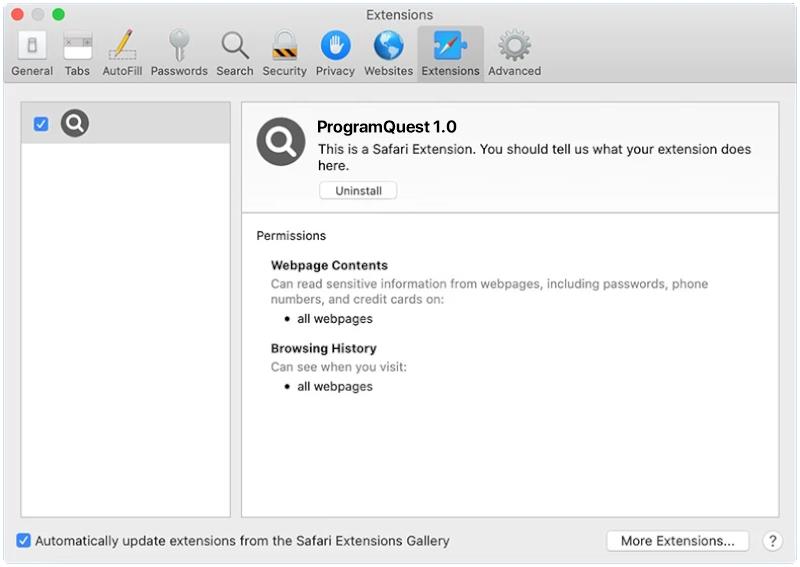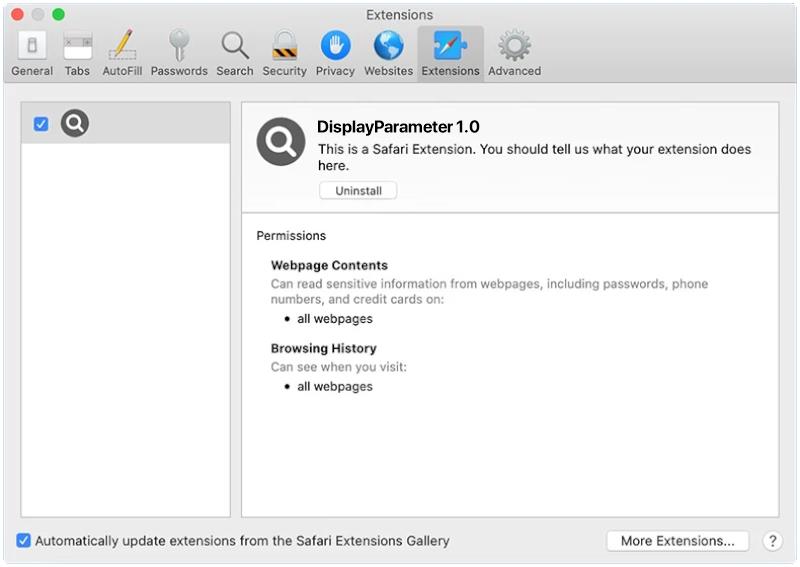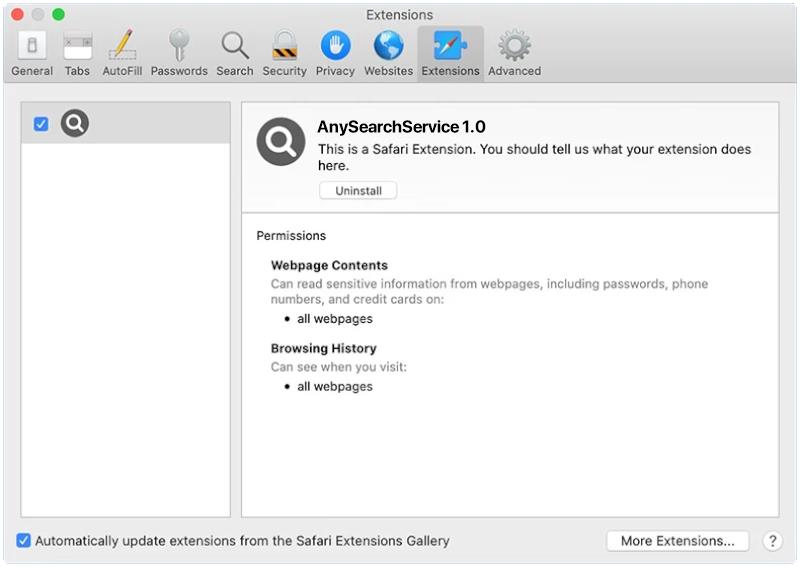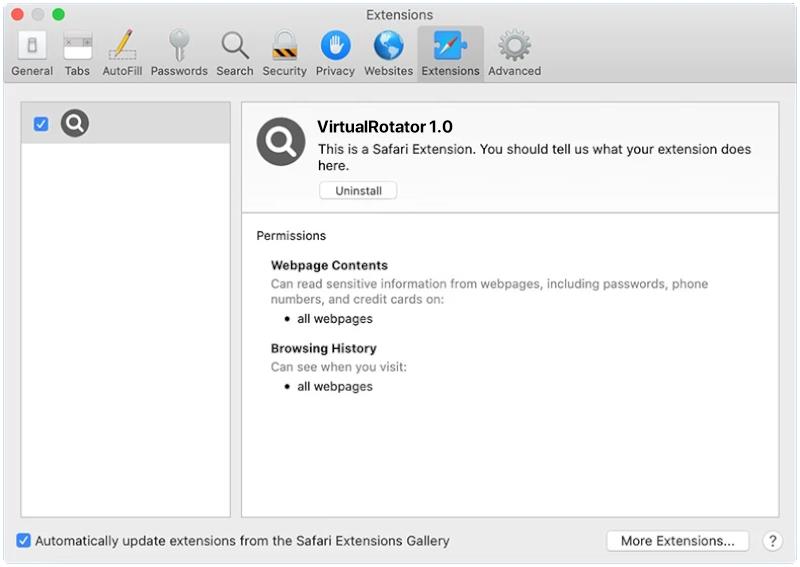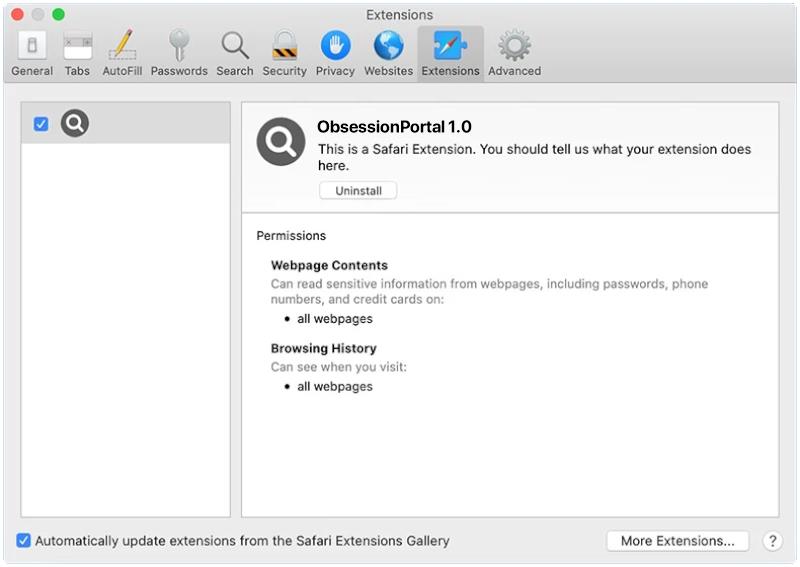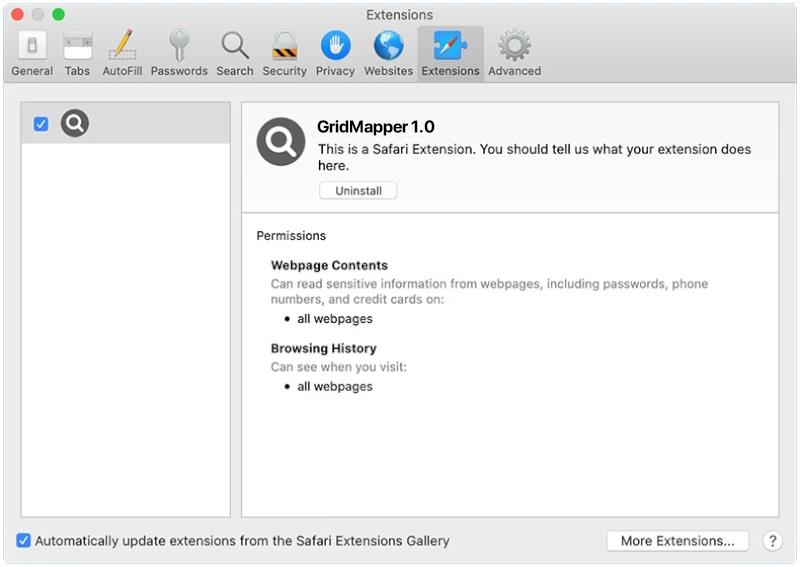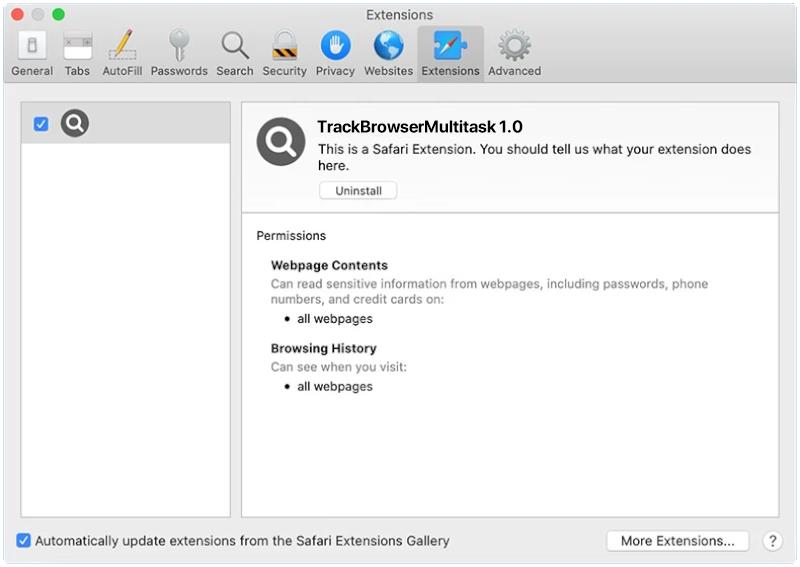ProgramQuest is a type of malware that infects Mac computers by disguising itself as a legitimate program or software update. Once installed on the system, ProgramQuest can perform a variety of malicious activities, such as stealing personal information, tracking online activity, and displaying unwanted advertisements.
ProgramQuest typically infects Mac computers through phishing emails, malicious websites, or software downloads from untrustworthy sources. It can also spread through removable media or file sharing networks. Once installed, ProgramQuest can be difficult to detect and remove, as it may disable security software and hide itself within the system files. It is important for Mac users to practice safe browsing habits, regularly update their operating system and security software, and be cautious when downloading or installing programs from unknown sources to prevent infection by ProgramQuest.

